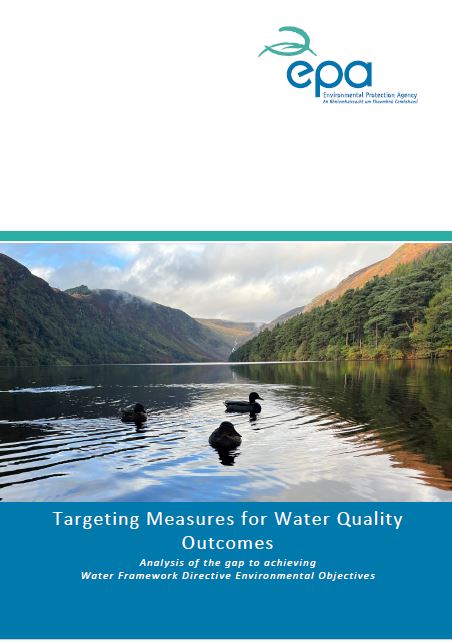Targeting measures for water quality outcomes - analysis of the gap to achieving Water Framework Directive Environmental Objectives
Summary: Understanding the state of Ireland's water quality and the effectiveness of planned measures is crucial for ensuring a sustainable future. This analysis, focusing on the Third Cycle Water Action Plan 2024, is based on data as of September 2023. The final Water Action Plan, which was published in September 2024, has been informed by, and includes information from, the EPA’s gap analysis of the draft Plan.

This analysis forecasts the number of waterbodies that are likely to achieve their 2027 status objectives, and those that are likely to show improvements, so that an assessment can be made of the gap to achieving Water Framework Directive (WFD) environmental objectives.
Current Status: Out of 4,842 water bodies assessed, only 54% are currently meeting their quality objectives. This leaves a significant number (over 2,200) requiring improvement.
- Progress Forecast: The plan aims to improve water quality by 2027. However, the EPA forecasts that only between 150 and 300 "At Risk" waterbodies are likely to meet their targets due to planned measures. In previous years, improvements made in some areas were offset by declines in water quality elsewhere, so there may be no net improvement once again.
- Challenges Ahead: The report identifies three key gaps hindering progress: the measures gap, the effectiveness gap, and the evidence gap. These gaps highlight the need for more targeted actions, a better understanding of measure effectiveness, and further investigation into waterbodies where data is lacking.
Measures Gap: 864 "At Risk" waterbodies lack specific plans to address pressures like pollution from urban areas, changes to the physical structure of waterways, and invasive species. Without such plans, improvement is unlikely.
Effectiveness Gap: Even where measures are planned, uncertainty remains about their effectiveness. This is particularly true for voluntary measures, where success relies on individual actions and cooperation.
Evidence Gap: For 583 waterbodies, more data is needed to determine the specific water quality issues and pressures before effective measures can be designed.
The EPA's analysis emphasises the importance of continuous monitoring, data collection, and collaboration to refine the plan and ensure its success.
https://www.epa.ie/media/epa-2020/environment-amp-you/freshwater-amp-marine/Gap-analysis-report-cover.JPG